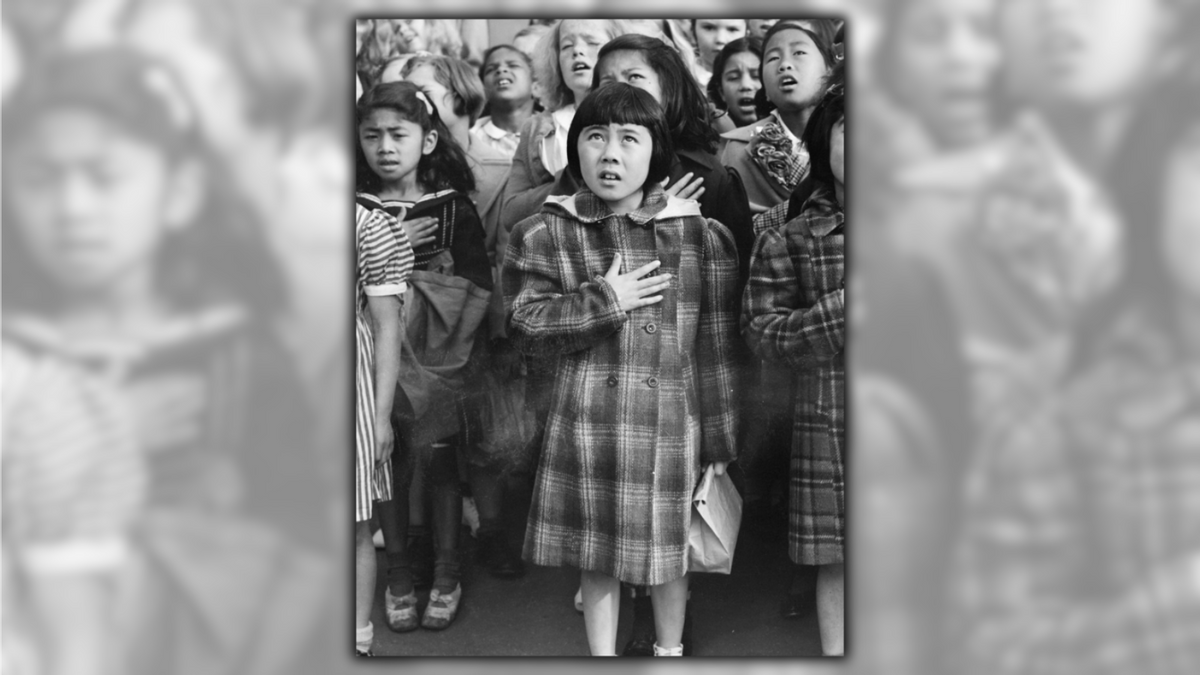On March 8, 2024, Reddit account phoeebsy uploaded a black-and-white photo of what appeared to be a young girl taking part in the U.S. Pledge of Allegiance during World War II (archived here).
The account claimed the girl was Japanese American and later incarcerated, along with her family.
A Japanese-American girl pledging allegiance to US flag before she and her family were incarcerated.
byu/phoeebsy inpics
Similar posts were found on X (formerly Twitter).
The now-husband of the then-young girl told Snopes via email the information in the caption "is correct."
Sam Mihara confirmed the image showed Helene Mihara née Hideno Nakamoto pledging her allegiance to the U.S. flag in San Francisco in April 1942. He also verified the fact she and her family were incarcerated during World War II, after the photo was captured.
"Your information is correct. Photo was taken by Dorothea Lange in 1942, just prior to being removed to go to the prison camps for 120,000 Japanese Americans."
The image appeared on the Library of Congress (LoC) website, where it stated Helene Mihara's father was interned at a Department of Justice camp for "enemy aliens" in Bismarck, North Dakota, after being arrested. It added:
He was later transferred to Lordsburg Internment Camp, Lordsburg, New Mexico, before being reunited with his family 15 months later at Tule Lake Relocation Center in Newell, California.
The LoC page also said Helene, her mother and sister "were forcibly removed to Tanforan Assembly Center before being transferred to Tule Lake Relocation Center and later Central Utah Relocation Center, Topaz, Utah."
LoC referenced photographer Paul Kitagaki Jr's book "Behind Barbed Wire: The Search for Japanese Americans Incarcerated During World War II," which included an interview with Helene about her father's incarceration.
Similar details were found in a Smithsonian article and in a Getty Museum PDF.

